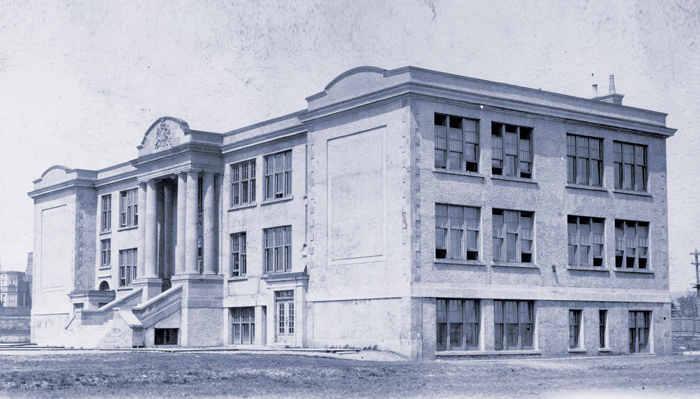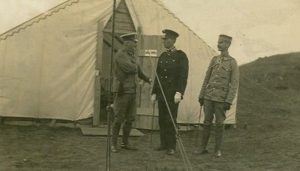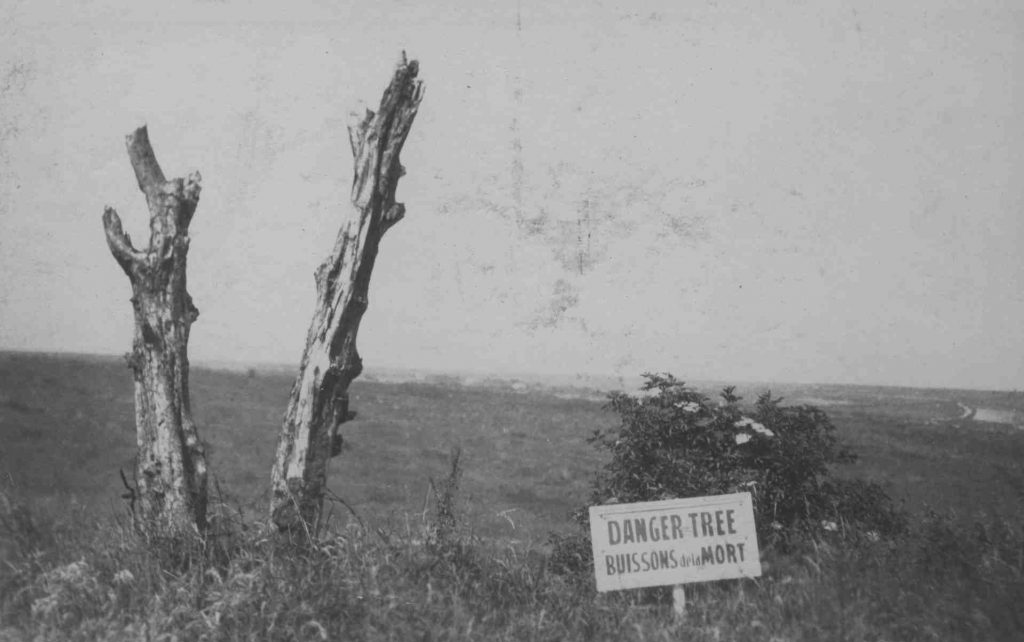WW100 COMMEMORATION PROGRAM
By Bert Riggs, BA(Hons.)’77, B.Ed.’77, MA’12

The establishment of Memorial University College as a living memorial to those Newfoundlanders who fought and died is a unique origin among universities in North America. It is an honour that carries a special responsibility.
To commemorate the centenary of the First World War, in 2014 the university created the WW100 Commemoration Program. It is designed to encourage and empower the entire university community to develop projects that are academic, commemorative, or contribute to library and archival resources. Seed funding for these projects is provided through the Living Memorial Commemoration Fund. As of fall 2016, more than 62 projects have been sponsored.
Over the past three years, we have commemorated in ways both big and small. For example, we have distributed commemorative collegiate scarves to new students, the Queen Elizabeth II library is digitizing key Newfoundland and Labrador newspapers during the war years, and the Faculty of Medicine held a symposium on Dr. Cluny Macpherson, Honorary D.Sci.’62, the Newfoundland medical doctor who invented the first gas mask. The faculty has also acquired an original First World War gas mask for permanent display at the medical school. At alumni events across Canada we have distributed thousands of forget-me-not lapel pins, a special symbol of remembrance that was adopted in Newfoundland after the First World War.

BUILDING KNOWLEDGE
On the West Coast at Grenfell Campus, Dr. Maura Hanrahan, BA’84, received funding to study the Newfoundland Mi’kmaq participation in the First World War. Dr. Hanrahan’s initial research revealed that little was known about Newfoundland and Labrador Aboriginal soldiers in the First World War. To address this gap, Dr. Hanrahan and a student assistant conducted interviews, researched archives and visited cemeteries. As a result, she has compiled a data set on more than 140 Aboriginal soldiers which has added immeasurably to the collective knowledge of the First World War.
Among other research projects is Dr. Jim Connor’s interdisciplinary work through the Faculty of Medicine. Dr. Connor looks at the origins of plastic surgery in the First World War, with a focus on Pte. George Stone, a soldier who suffered severe facial injuries at Beaumont-Hamel and whose case was indicative of others during the period that advanced the evolution of plastic surgery. He also explores Pte. Stone’s post-war experience, one of lifelong struggle and perseverance that serves as a reminder to also commemorate those who returned.
PILGRIMAGE, REMEMBRANCE AND REDEDICATION
A group of 24 Memorial students studying at Harlow Campus in the U.K. were able to visit the historic battlefield at Beaumont-Hamel, France in November 2014. During their Remembrance Day experience, made possible with support from the commemoration fund, they made a poignant video of each student reciting a portion of the John Oxenham poem, Tread Softly Here . Before the day ended, the students had uploaded the video to YouTube.
Of course, before Beaumont-Hamel there was Gallipoli, where the Newfoundland Regiment was first introduced to battle. In 2015, a number of activities were organized to recognize the centenary of the Regiment’s war time on the peninsula. These included an art exhibition of poppy paintings by Turkish artist Hikmet Çetinkaya, a free public symposium on the campaign and a Gallipolithemed Ceremony of Remembrance. During the annual university ceremony, students from Newfoundland and Labrador and Turkey read letters written by soldiers from both sides at Gallipoli. This event was the highest kind of commemoration — one in which once-combatants peacefully remembered all of the fallen.
The rededication of Memorial’s original Parade Street campus also occurred in 2015, upon completion of construction at the site of the Royal Newfoundland Constabulary (RNC) Headquarters at Fort Townshend in St. John’s. Renamed the Newfoundland Constabulary Memorial Campus, the building now bears a new memorial plaque that reflects its unique history. The WW100 program partnered with the Memorial on Parade Commemoration Committee, a group of volunteers led by committee chair Robert LeMessurier, BA’62, B.Ed.’63. The group initiated a fundraising effort for the plaque and worked with other volunteers from the former Fisheries College and the RNC. The committee is now working toward an initiative for the site that will reference its complete history and expand on the memorial.
LOOKING BACK AND THINKING FORWARD
In 2016 the WW100 program supported a day-long symposium that was presented in partnership with the Royal Newfoundland Regimental Advisory Council and the Newfoundland Historic Society and dedicated to the memory of local historian Dr. W. David Parsons. 1916: Beaumont-Hamel and Beyond, was held on June 18, and the program included an overview of the major conflicts of 1916 in order to place Beaumont-Hamel in perspective. Presentations allowed participants to follow the Newfoundland Regiment from Gallipoli to Beaumont-Hamel and a broad range of projects were featured. One example was an initiative led by David Mercer, B.Sc.’89, M.Sc.’96, geographic information system specialist with Memorial University Libraries. His work represents period-specific battlefield topography with computer-generated images, showing those landscapes from the perspective of the soldiers in the First World War. The symposium was launched the previous evening with a special screening of the new full-length documentary, Newfoundland at Armageddon, at Memorial’s Bruneau Centre for Research and Innovation. Sessions from the symposium can be viewed online.
A national multidisciplinary conference on post-traumatic stress disorder (PTSD), organized by the SafetyNet Centre for Occupational Health and Safety, was also sponsored by the WW100 program and hosted on Memorial’s St. John’s campus from July 31-Aug. 2, 2016. One hundred years after the First World War, the complex challenges associated with PTSD are still being faced daily, not only by veterans who have experienced the trauma of military service, but also by a range of people in diverse occupational settings who are exposed to threats to their physical or emotional safety. This conference brought together researchers from a variety of universities and disciplines, a range of community partners, experts, stakeholders, and members of the public with expertise and interest in issues related to the complex realities of PTSD.
Many student-focused projects have also been supported. The Theatre, Film, and Society initiative, led by Dr. Jamie Skidmore of the Department of English and Dr. Andrea Proctor of the Department of Geography, is a joint program that was offered at Memorial’s Harlow Campus during the fall 2016 semester. It supported students’ travel to Beaumont-Hamel, Vimy Ridge and Berlin to create films and other visual media pieces commemorating the First and Second World Wars. Dr. Skidmore’s English 4401 course was also assisted through the WW100 program in the staging of Kevin Kerr’s award-winning play, Unity (1918).
A MONUMENT AND A LIVING LEGACY
This past year also saw the official dedication of the Danger Tree sculpture at Grenfell Campus (see p.8) by Her Royal Highness The Princess Royal, who is the Royal Newfoundland Regiment’s colonel-in-chief. Created by Corner Brook native Morgan MacDonald, BBA’04, the installation was the result of a tremendous fundraising effort by the Forget-Me-Not Committee under the leadership of its chair, Dave Higdon.

With three more years of the centenary period remaining, we will continue to see important outcomes of our investments in commemoration activities. Plans include ongoing work on an education initiative in Labrador with the Labrador Heritage Society; other class and student trips to Beaumont-Hamel and other battlefield sites in Europe; public lectures and symposia as well as the many ongoing academic initiatives that continue to advance relevant areas of study and research.
Clearly, Memorial University recognizes that it has a special responsibility as a living memorial. Through these and other WW100 program projects, the university aims to create tangible legacies of the First World War experience.
However, Memorial University is more than a living memorial. We embody an aspiration of those who served — to build a better world. The struggles of our forbearers in the First World War, both in the war theatre and on the home front, are an inspiration for us all to strive for excellence and to give back to society. Memorial University is a living legacy that continues to support the development of our people and our province.
Bert Riggs is the former head, Archives and Special Collections, QEII Library, Memorial University, and a member of the advisory and steering committees for the WW100 Commemoration Program. For more information please visit Memorial’s WW100 program website.


